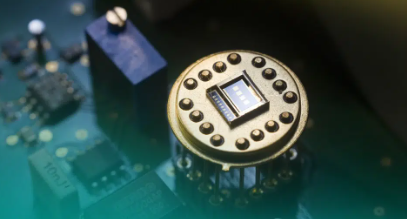Principle application of optical sensor and inertial sensor
In the ever-evolving realm of sensor technology, the choice between optical sensors and inertial sensors is a critical decision that engineers and designers must make. Each type of sensor comes with its unique set of advantages and limitations, shaping their applications in diverse industries. In this article, we delve into the intricacies of optical sensors vs inertial sensors, exploring their principles, applications, and the factors that influence the decision-making process.

Optical Sensors: Shedding Light on Precision
Understanding Optical Sensors
Optical sensors operate on the principle of detecting light or electromagnetic radiation to gather information about their surroundings. These sensors can capture various aspects of the electromagnetic spectrum, including visible, infrared, and ultraviolet light. The most common types of optical sensors include photodiodes, phototransistors, and image sensors.
Precision in Detection
One of the standout features of optical sensors is their precision in detection. By harnessing the power of light, these sensors can provide high-resolution imaging, accurate color sensing, and precise distance measurements. Applications range from simple ambient light sensors in smartphones to sophisticated machine vision systems in industrial automation.
Applications of Optical Sensors
Consumer Electronics: Optical sensors play a pivotal role in devices like smartphones and cameras, facilitating features such as facial recognition, gesture control, and autofocus.
Medical Imaging: In medical fields, optical sensors contribute to technologies like endoscopy and non-invasive imaging, ensuring high-resolution visuals for diagnostic purposes.
Industrial Automation: Optical sensors are integral to automated systems in manufacturing, supporting tasks like quality control, object detection, and sorting.
Environmental Monitoring: Optical sensors are used for remote sensing in environmental applications, such as monitoring vegetation health and analyzing atmospheric conditions.
Inertial Sensors: Navigating Movement and Acceleration
Understanding Inertial Sensors
Inertial sensors, on the other hand, are designed to detect and measure changes in acceleration and angular velocity. These sensors rely on the principles of inertia, utilizing accelerometers and gyroscopes to sense movement and orientation changes.
Precision in Motion Sensing
Inertial sensors excel in capturing dynamic movements. Whether it’s the tilt of a smartphone screen or the precise navigation of an unmanned aerial vehicle, these sensors provide real-time data on changes in velocity and rotation.
Applications of Inertial Sensors
Navigation Systems: Inertial sensors are crucial components in navigation systems for vehicles, aircraft, and marine vessels, offering precise data for tracking movement.
Sports and Fitness Devices: Wearable fitness trackers and smartwatches utilize inertial sensors to monitor physical activities, track steps, and analyze workout routines.
Augmented Reality (AR) and Virtual Reality (VR): Inertial sensors contribute to the immersive experience in AR and VR applications by tracking head and body movements.
Robotics: Inertial sensors play a vital role in robotics, enabling robots to sense changes in position and adjust their movements accordingly.
Choosing Between Optical and Inertial SensorsFactors Influencing the Decision
Environment and Conditions: Optical sensors may struggle in low-light conditions, whereas inertial sensors remain unaffected. Consider the operational environment to ensure the selected sensor can perform optimally.
Precision Requirements: If the application demands high-precision measurements, especially in imaging or detection, optical sensors might be the preferred choice. In contrast, inertial sensors are adept at capturing rapid changes in motion.
Power Consumption: In battery-powered devices, power consumption is a critical factor. Inertial sensors often have lower power requirements compared to some high-performance optical sensors.
Cost Considerations: The cost of sensors can vary significantly. Depending on the project budget, one type of sensor may be more economically viable than the other.
Integration Complexity: Optical sensors may require more complex integration processes, especially in systems involving lenses and image processing. Inertial sensors, being more compact, may offer simpler integration.
ConclusionIn the realm of sensors, the choice between optical and inertial sensors is not about declaring one superior to the other; it’s about understanding their strengths, weaknesses, and applications. Engineers and designers must carefully evaluate the specific requirements of their projects to make informed decisions.
Optical sensors excel in precision imaging and color detection, making them ideal for applications in consumer electronics and medical imaging. Inertial sensors shine in capturing dynamic movements and changes in orientation, finding their niche in navigation systems, robotics, and sports devices.
The future of sensor technology lies in synergy and integration. As industries continue to push the boundaries of innovation, the collaboration between optical and inertial sensors will likely lead to new breakthroughs, enhancing the capabilities of devices and systems across various domains.
在线留言询价
- 一周热料
- 紧缺物料秒杀
| 型号 | 品牌 | 询价 |
|---|---|---|
| MC33074DR2G | onsemi | |
| TL431ACLPR | Texas Instruments | |
| BD71847AMWV-E2 | ROHM Semiconductor | |
| RB751G-40T2R | ROHM Semiconductor | |
| CDZVT2R20B | ROHM Semiconductor |
| 型号 | 品牌 | 抢购 |
|---|---|---|
| TPS63050YFFR | Texas Instruments | |
| STM32F429IGT6 | STMicroelectronics | |
| IPZ40N04S5L4R8ATMA1 | Infineon Technologies | |
| BU33JA2MNVX-CTL | ROHM Semiconductor | |
| BP3621 | ROHM Semiconductor | |
| ESR03EZPJ151 | ROHM Semiconductor |
- 周排行榜
- 月排行榜
AMEYA360公众号二维码
识别二维码,即可关注
























